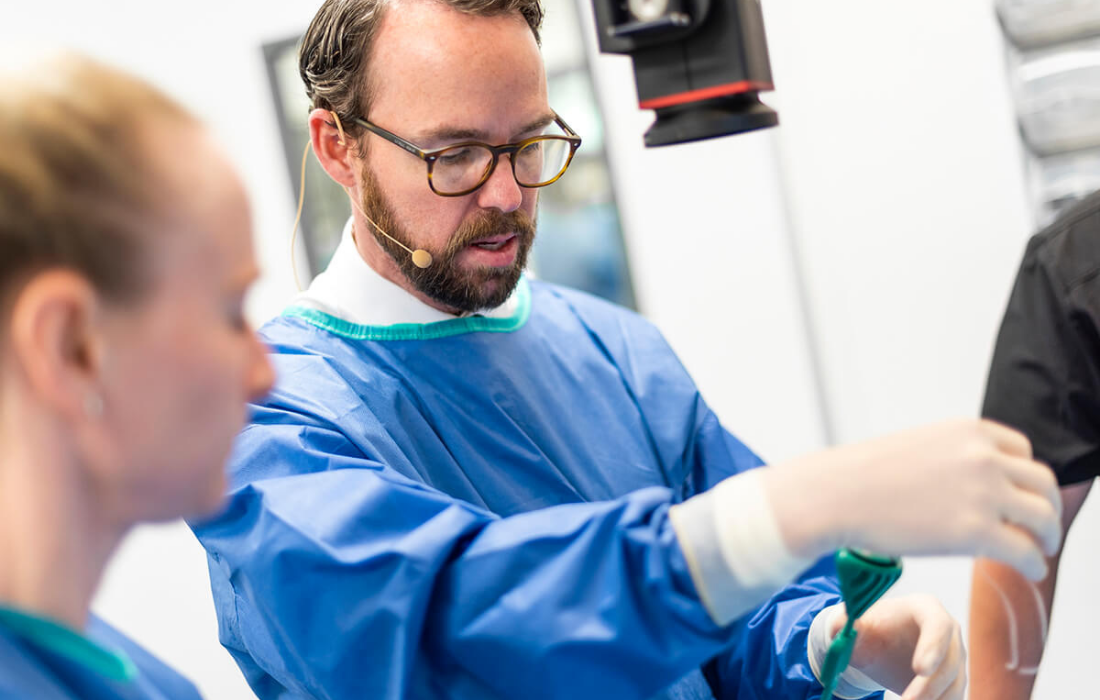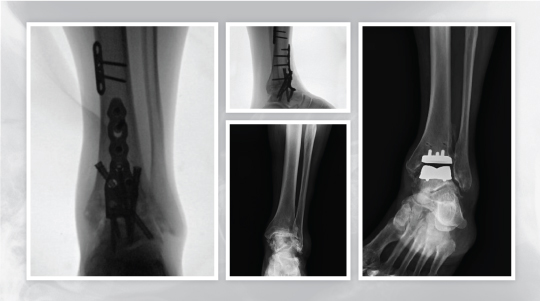Peroneal tendonitis is when the peroneal tendons cause lateral foot and ankle pain due to either acute injury or degeneration of the tendons over time. With prompt treatment, you may be able to resume your usual activities within several weeks after diagnosis.
Here’s more about the causes, symptoms and treatments for peroneal tendonitis, and how to contact University Orthopaedic Associates if you need foot and ankle care.
What Is Peroneal Tendonitis?
The peroneal tendons are two tendons that run behind the fibula bone at the outside of the ankle and continue along the outside of the hindfoot and midfoot. Peroneal tendonitis occurs when these tendons become inflamed, torn, or enlarged—either from an injury or due to repetitive activities that irritate the tendons. These tendons work to stabilize the foot and ankle, particularly on uneven surfaces like gravel, sand, and hiking trails.
This condition can be treated by a foot and ankle specialist. Peroneal tendonitis is often successfully treated without surgery, though surgery may be needed if symptoms do not respond to nonsurgical treatments such as rest, bracing, physical therapy and anti-inflammatory medications.
Causes Of Peroneal Tendonitis
The most common cause of peroneal tendonitis is overuse of the peroneal tendons. In some patients, an underlying foot or ankle deformity may be contributing to these tendons working more than usual. Any activity can aggravate the peroneal tendons, particularly those requiring walking or running on uneven surfaces. The peroneal tendons can also be injured during an ankle sprain.
Other causes and risk factors include:
- Increasing your activity level or the intensity of your workouts too quickly.
- Having high arches or heels that turn inward.
- Having tight or weak calves.
- Diabetes
- Being overweight or obese.
- Not stretching before exercising.
Symptoms
Pain, swelling, and tenderness around the back of the fibula and just below the fibula are the most common symptoms of peroneal tendonitis.
Other symptoms may include:
- Pain that gets worse with activity and that goes away with rest.
- Pain when turning the foot all the way inwards or outwards
How Is Peroneal Tendonitis Diagnosed?
Peroneal tendonitis can be diagnosed by a foot and ankle specialist. First, your provider will ask you questions about your symptoms, and will then examine your foot and ankle structure. Your doctor will then palpate your foot and ankle to determine if your peroneal tendons are aggravated.
In some instances, your doctor may recommend imaging tests such as an MRI, X-ray or CT scan to get a clearer view of your tendons and to detect any tears, damages or abnormalities.
Treatment Options
Many cases of peroneal tendonitis can be treated with conservative, nonsurgical treatments, as overuse injuries often benefit from a period of rest followed by rehabilitation. Surgery may be needed if your condition does not respond to conservative treatments.
Common treatment options include:
- RICE (rest, ice, compression and elevation). RICE may help reduce pain and inflammation.
- Non-steroidal anti-inflammatory (NSAID) drugs. Over-the-counter medicines, such as ibuprofen, may reduce pain related to inflammation and swelling.
- Brace. An ankle brace can help rest and protect your injured tendons by stabilizing your ankle.
- Cast or boot. These assistive devices can immobilize your foot and better rest your peroneal tendons.
- Physical therapy and exercise. Certain exercises can help strengthen your ankle and improve its flexibility.
- Training modification. Changing how you exercise or reducing your training intensity may help improve your condition.
- Surgery. Surgery may be performed to repair a torn peroneal tendon or to remove diseased tissues. Surgeries include both arthroscopic procedures and open procedures.
Recovery
Peroneal tendonitis recovery time can last anywhere from a few weeks to several months, depending on the severity of the injury. Adhering closely to your treatment plan may speed up your recovery so you can resume your usual activities relatively quickly. Your orthopaedic doctor may instruct you to avoid all weight-bearing activities for at least six weeks to promote the healing of your peroneal tendon.
University Orthopaedic Associates offers a wide range of orthopaedic services, including peroneal tendonitis treatment. Contact UOA today at (732) 537-0909 to request an appointment with a foot and ankle specialist if you need treatment for an orthopaedic injury.




